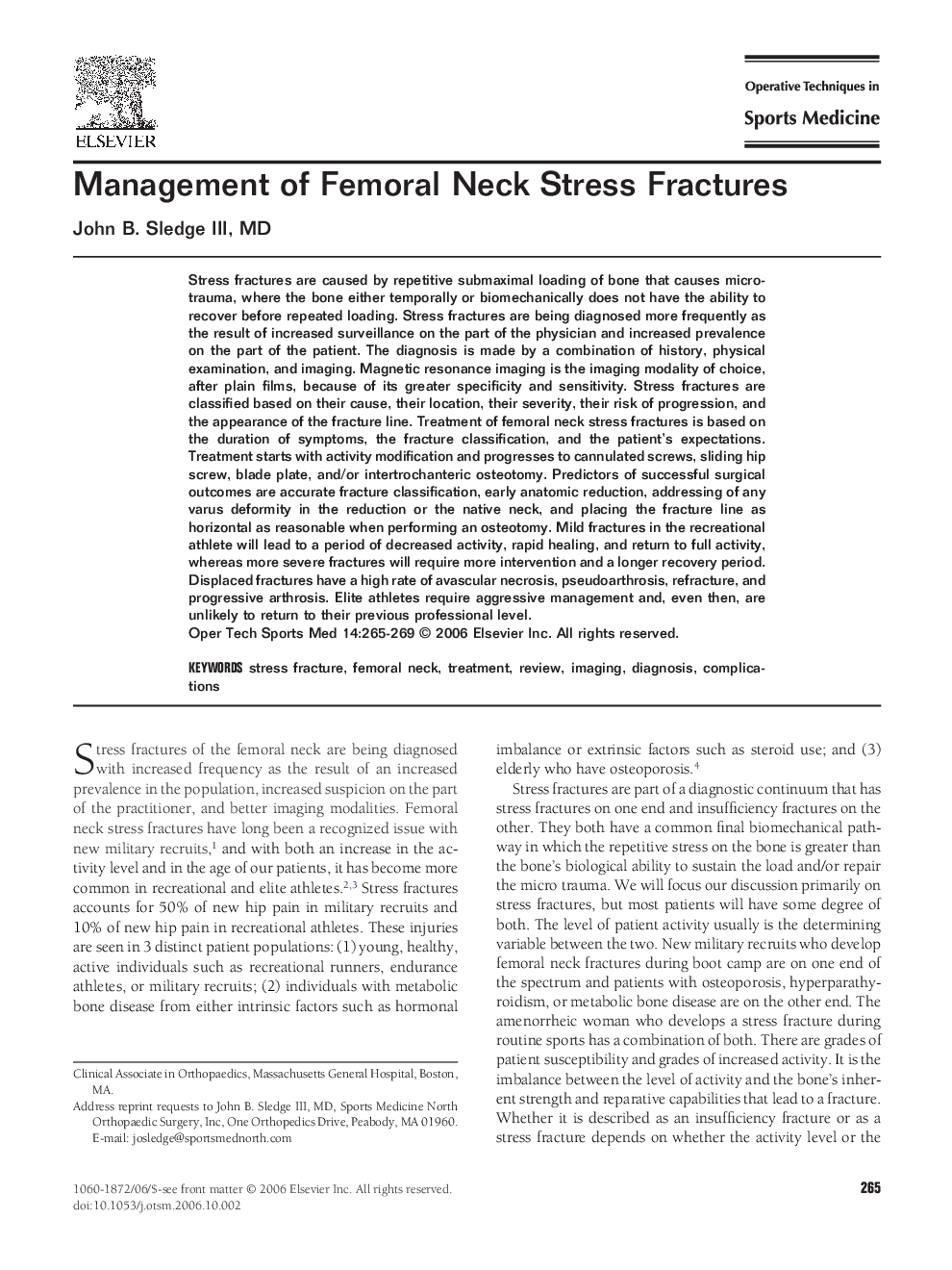| Article ID | Journal | Published Year | Pages | File Type |
|---|---|---|---|---|
| 4079942 | Operative Techniques in Sports Medicine | 2006 | 5 Pages |
Stress fractures are caused by repetitive submaximal loading of bone that causes microtrauma, where the bone either temporally or biomechanically does not have the ability to recover before repeated loading. Stress fractures are being diagnosed more frequently as the result of increased surveillance on the part of the physician and increased prevalence on the part of the patient. The diagnosis is made by a combination of history, physical examination, and imaging. Magnetic resonance imaging is the imaging modality of choice, after plain films, because of its greater specificity and sensitivity. Stress fractures are classified based on their cause, their location, their severity, their risk of progression, and the appearance of the fracture line. Treatment of femoral neck stress fractures is based on the duration of symptoms, the fracture classification, and the patient’s expectations. Treatment starts with activity modification and progresses to cannulated screws, sliding hip screw, blade plate, and/or intertrochanteric osteotomy. Predictors of successful surgical outcomes are accurate fracture classification, early anatomic reduction, addressing of any varus deformity in the reduction or the native neck, and placing the fracture line as horizontal as reasonable when performing an osteotomy. Mild fractures in the recreational athlete will lead to a period of decreased activity, rapid healing, and return to full activity, whereas more severe fractures will require more intervention and a longer recovery period. Displaced fractures have a high rate of avascular necrosis, pseudoarthrosis, refracture, and progressive arthrosis. Elite athletes require aggressive management and, even then, are unlikely to return to their previous professional level.
